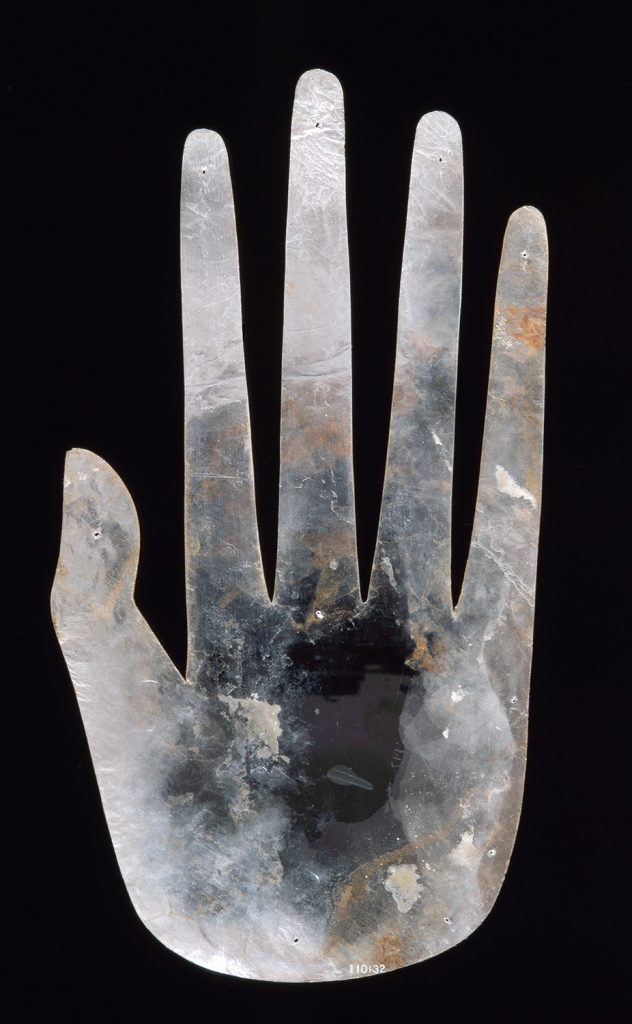Is a Hand Wave a Universal Greeting?
On a recent Saturday, I took my three boys camping along the Cache la Poudre River, one of the most picturesque watersheds in all of northern Colorado. Its rocky terrain and steep grades mean that the river has carved deeply through bedrock, creating narrow canyons that are ideal for kayaking and whitewater rafting. Coursing as it does through the university town of Fort Collins, the river is used recreationally, but it’s not inundated with people—unlike the mountains west of Denver.
Although my boys and I did not go rafting or kayaking, we played along the river, seeking our own adventures. Occasionally, a raft with up to 10 helmeted, wet-suited, and lifejacket-clad paddlers would go by. Almost invariably, at least one person on each raft would raise a hand to wave a greeting, occasionally also shouting out “hello.” We did the same in return.
That got me thinking: Why do most humans raise a hand in greeting? What does this gesture mean? What are the origins of this behavior? Why don’t we usually greet strangers this way when going about our daily lives, especially in the city? In my experience, the only time people cheerfully wave or signal a greeting to strangers while traveling in cars is when rural drivers pass each other on country roads. In the city, hand gestures between people in cars often have a different, unpleasant meaning, at best equivalent to a Bronx cheer.
Western Europe contains breathtaking evidence that hands held special significance to humans.
The timing and evolutionary origin of hand-gesture greetings will never be fully understood, for there is no tangible evidence of their inception that is preserved in the archaeological record. In cases where they do appear, however, they are often exquisite.
Beginning around 35,000 years ago, the archaeological record of Western Europe contains breathtaking evidence that hands held special significance to humans. The painted caves of Pech Merle in southwestern France and El Castillo in northern Spain, as well as many others, contain dramatic hand stencils. A recent study of cave art in Western Europe suggests that many if not most of the hands used in such art belonged to women, not men. This discovery turns years of archaeological dogma on its head. Archaeologists have long assumed that cave paintings, which often depict herd animals, were created by men as part of ritual activities designed to ensure success in the hunt.
Regardless of who made them, we still don’t know what Stone Age hand stencils meant. Were they the artists’ signatures? Were they meant to be timeless greetings to future viewers? Were they waves of goodbye to the dearly departed? Given the difficulties of getting into the caves, much less seeing and working in them with nothing but oil lamps or torches to provide light, I am inclined to believe they were signatures rather than greetings. But we simply don’t know, and probably never will.
The Field Museum in Chicago curates one of my favorite artifacts in the world. It is an elegantly stylized effigy hand with elongated fingers that was cut from a single piece of mica. (Mica is a silicate mineral that forms in flat sheets.) It is surprisingly large, measuring nearly 11 inches (the height of a standard piece of office paper) from the base of the palm to the tip of the middle finger.
Archaeologist Henry Clyde Shetrone excavated the hand from a burial mound at the Hopewell Mound Group in south-central Ohio in the early 1920s. It became, and remains, an instantly recognizable aspect of what is known today as the Hopewell culture.
The Hopewell culture was a complex, hierarchical society of agriculturalists living in the greater Midwestern United States about 2,000 years ago. Well-known for their construction of massive earthworks and burial mounds, many in the shape of animals, the Hopewell left behind a wide range of beautiful artifacts.
In order to make these artifacts, the Hopewell acquired raw materials from all over what is now the United States. Raw copper and bear teeth came from northern Michigan. Shells, pearls, and shark teeth came from the Gulf Coast. Obsidian, or volcanic glass, came from sources near Yellowstone National Park, a distance of more than 1,500 miles from the epicenter of Hopewell culture in Ohio, Indiana, and Illinois. The mica probably came from South Carolina.
Just as remarkable is the fact that the Hopewell collected these raw materials in the absence of wheeled or draft-animal transport, which meant they hand-carried the materials across the landscape. One might suppose that they used some kind of watercraft to transport large quantities of stone, ore, and other commodities, but no such craft has ever been found. The Hopewell’s reach was so extensive that archaeologists coined the term Hopewell Interaction Sphere in an effort to capture its essence. Not simply part of a trade network, the culture’s artistic and ideological influence could be evidence of the first Pan-Indian religious movement.
Unlike the Upper Paleolithic hand stencils, however, I don’t think there is any way to interpret the Hopewell effigy hand as a signature. It was encapsulated in a burial mound, after all. Was it intended to introduce the deceased to her or his ancestors, or to others in the spirit world? Was it used publicly before being buried? Was it made by the person it was buried with?
We have no way of knowing. But I’d like to think there is more to this piece than aesthetics. Indeed, I’d like to think it’s a universal human greeting sent to us through layers of time. As was the case at the Cache la Poudre River, I’m inclined to wave back.

































